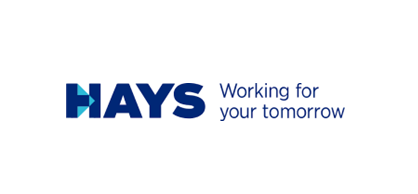- Research reveals 39% of professionals in Scotland working hybrid; 39% working full-time in office
- Hybrid working levelling out, but real issue must be working ‘productively’ not ‘harder’, says Hays
As the “office versus remote working” debate continues, new research by Hays has found that the number of employees in Scotland working in a hybrid way (39%) is now levelling out, with 39% also working fully in an office setting.
This even balance between hybrid and solely office-based work indicates a gradual but noticeable swing to full-time office working. That being said, almost a quarter (22%) of professionals in Scotland work fully remotely.
The research also showed that over half (56%) of workers would accept a job in the future even if it didn’t offer hybrid working, with 44% admitting that they wouldn’t accept a role that didn’t offer a hybrid working approach.
The research, based on a survey of nearly 15,000 professionals and employers, including 886 from Scotland, found that nearly two-thirds of employers in Scotland (68%) are offering hybrid working, yet over a quarter (27%) anticipate their hybrid working offering will change over the next 12 months, and that they will require increased staff attendance.
Keith Mason, Hays Scotland director, comments: “It’s clear from our research that there’s still no one-size-fits-all solution when it comes to how staff want to work and how flexible employers are willing to be. But employers need to recognise that everyone needs different elements of support and development to succeed.
“Productivity levels can significantly vary from person to person depending on where they’re working and at what time of day, and what suits one person might not suit another, so it’s important for employers to take these individual preferences into account.
“We’ve certainly seen an increase in people travelling to work in recent months. Hybrid working is still there, but it’s much less than before. Employers are driven by productivity and do expect staff to attend the office more. The level of productivity from working at home needs to be clearly demonstrated by workers.”
Nearly two-thirds of employers (71%) say they have refitted their workplace, office or meeting rooms to facilitate a smooth hybrid working approach. This includes installing large screens, cameras and microphones for an inclusive meeting experience when people are working in different locations.
Over half of organisations in Scotland (55%) now operate a hot desking policy at their workplace. 57% say this is a new approach after reducing the number of desks, compared to 43% who say they have always operated this way.
“Employers also need to be mindful of making the office a better place to work,” continues Mason. “In some cases, employers have reconfigured their offices to make sure hybrid working offers a streamlined experience, but many have also reduced the number of desk spaces, meaning there’s not necessarily enough physical room for all staff in one workplace. Hot desking can be effective, but it doesn’t allow staff to create their own consistent and personalised workspace, so these are all crucial things to weigh-up.
“If employers are asking staff back to the office more, they need to question if they’re doing it for the right reasons such as facilitating team-building opportunities, training and development, and enhancing collaboration and creativity, whilst ensuring they also offer an enticing work environment. Employers need to be mindful that their staff understand the benefits of being back in the office, and this is viewed as an opportunity to improve, rather than monitor performance.”
The research also shows that 40% of employers have different working policies for staff of varying levels or seniority. Just under half (48%) of employees agree that there should be different policies for junior and senior members of staff.

